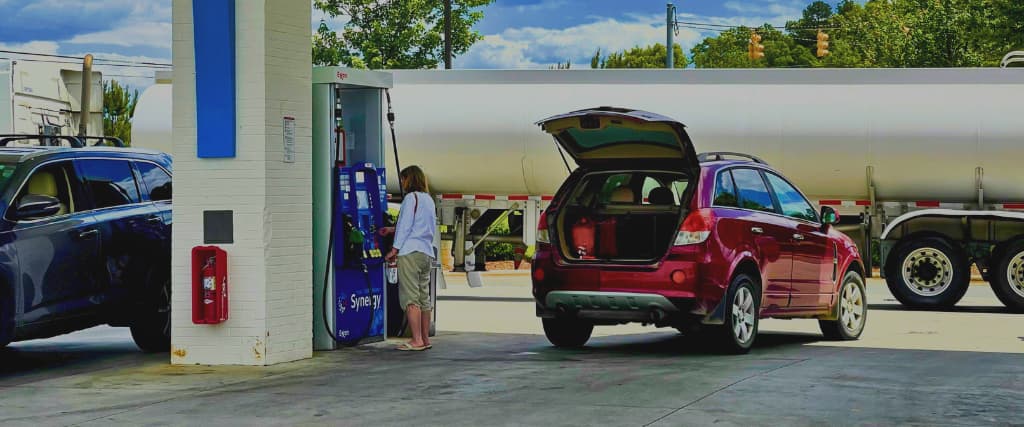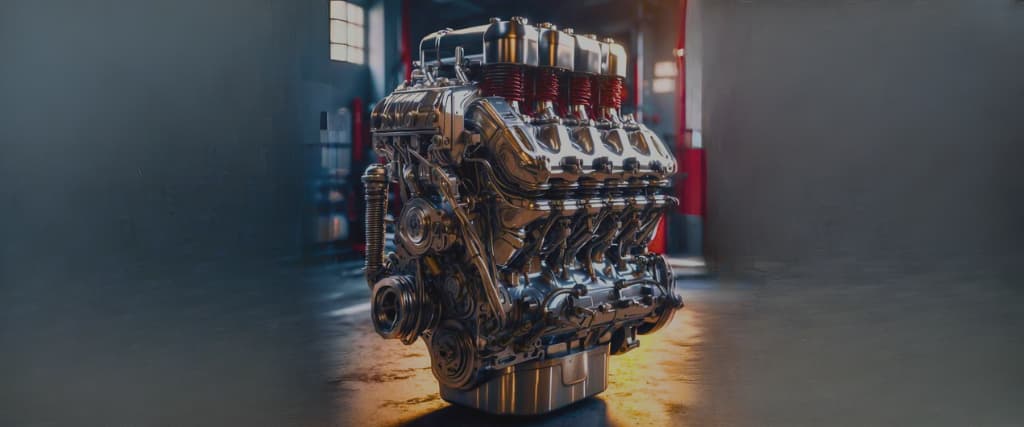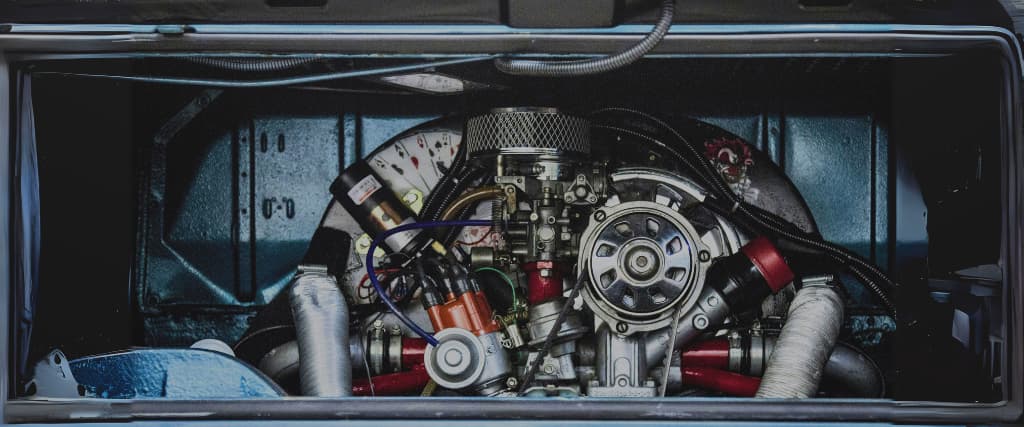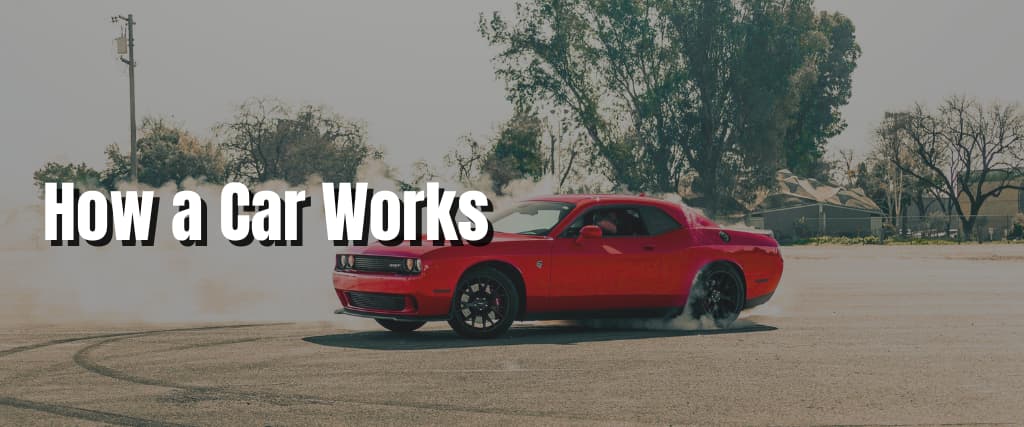Cars have transformed the world. They make it easy to take care of daily errands, commute to the office, and even take trips over long distances. Thinking that vehicles are magical is understandable. But the fact is that there isn’t much magic to it. How a car works is a simple process where fuel, spark, and air combine to generate power, propelling the vehicle to the destination.
If you’ve ever wondered how a car works, we’re ready to give you some answers. This post covers the basic details of how a car works, including the main design concepts of an engine and its critical components.
Three Components: Fuel, Air, and Electricity
While there are many innovative types of cars on the road today, this article focuses on the gasoline internal combustion engine (ICE) vehicle that most of us know.
When it comes down to brass tacks, three things combine to power most internal combustion engines. Those three vital components are:
- Fuel
- Spark
- Air
If these three aspects combine in the way the car is designed, it generates combustion harnessed by the vehicle to turn the wheels and drive us forward or reverse.
Volatile Gasoline

While electric vehicles are changing this dynamic, most of us understand that our cars need gasoline to run. If the gas tank is empty, the car won’t start. This feature is probably one thing you already know about how a car works.
Gasoline is the thing that provides the energy source. It is at rest in the car’s fuel tank. But when added with the right amount of air and hit with a spark, the gasoline explodes.
Your car’s engine is nothing more than a controlled series of small explosions, with gasoline providing the source of energy.
After you put gasoline into your tank, a fuel pump pushes the gasoline through a fuel filter and fuel lines to the engine. If the filter, lines, or pump malfunction, gasoline might not reach the engine, causing problems.
The Significant Spark
If your electrical system has problems, it can cause your engine to fail. We see this when the battery dies, preventing the engine from starting.
A dead battery can’t provide enough power to the electric starter motor. As a result, the engine won’t start. That’s not the only time your car needs electrical power.
Gasoline is a volatile liquid, but most engine designs still rely on an external spark for combustion. This reason is why the electrical system is crucial. It helps start your vehicle and provides a constant ignition source for gasoline.
Spark plugs are placed carefully in the engine, connected to the electrical system and computer, and ready to provide a spark at specific moments. As soon as the gasoline is ready, the spark plugs fire, causing combustion.
If you have worn spark plugs that no longer provide a sufficient spark, or if there is another problem with your alternator, spark plug wires, or another electrical component, your engine may fail to run.
It’s worth noting how a car works with diesel engines is different. They rely on pure compression and don’t have spark plugs. Removing this electrical component is one reason diesel engines are known for longevity, although they still require it to start the engine.
Engine or Air Pump?

Last but certainly not least, how a car works depends heavily on the air. It’s helpful to think of an engine as a giant air pump.
The air comes in, mixes with fuel before rapidly combusting and expanding, and then flows out the exhaust. The air expansion provides the power to propel you down the road.
This process repeats over and over again: air comes in, expands, and pushes you forward. That’s the basic idea behind how a car works. To confirm this, you only need to try to start any car or combustion engine with the air intake or exhaust clogged.
This feature is why your car’s air system, including the sensors, intake, and exhaust, are critical components of how a car works. Air must flow into the engine and out of the exhaust for the engine to work.
The more air provided, the more power your car can create. Most of the ways that you add more power are by increasing the engine’s airflow.
This reason is why turbochargers and superchargers exist. They provide additional air to the engine so the car can add more fuel, thus generating more power.
You can add more air by:
- Using a bigger engine
- An improved intake system
- A free-flowing exhaust
These are all ways to add more air to the engine, generating more power.
Bringing It All Together: How a Car Works

In a working engine, the first thing that happens is the air enters the system through the air intake. It goes through an air filter to remove dirt and debris before being fed into your engine.
Modern engines have sensors that tell the computer details about the air, often including the temperature, humidity, and other parameters that can impact the combustion process.
At the same time, the gasoline is also carefully pumped in. Thanks to the air sensors, your car knows how much fuel to provide. It delivers the ideal amount and prepares for ignition.
When the air-fuel mixture combines at the right moment, your car sends a bit of electricity to the spark plugs, igniting the air-fuel mixture and causing rapid combustion and expansion of the air.
That expansion is the power fed through your engine, transmission, and axle so that your tires turn and the car accelerates down the road.
Application to Four Stroke Engine
In a modern four-stroke engine, this is four steps inside each cylinder.
Step one is intake. The piston drops, drawing the air-fuel mixture into the cylinder. Step two is compression, where the piston rises and compresses the mixture.
Step three is the fun one: power. The spark ignites the compressed air-fuel mixture, which pushes the piston down. This power transfers from the piston through various components to your wheels.
Step four is exhaust, where the piston rises and pushes the spent mixture out of the engine and the exhaust, back into the environment.
That four-stroke system is how a car works. It converts the gasoline, spark, and air into your ability to get around town.
Final Thoughts
While cars seem like extraordinarily complicated machines, their inner workings boil down to three main aspects: fuel, spark, and air. Understanding these features allows you to see the bigger picture of how a car works.


